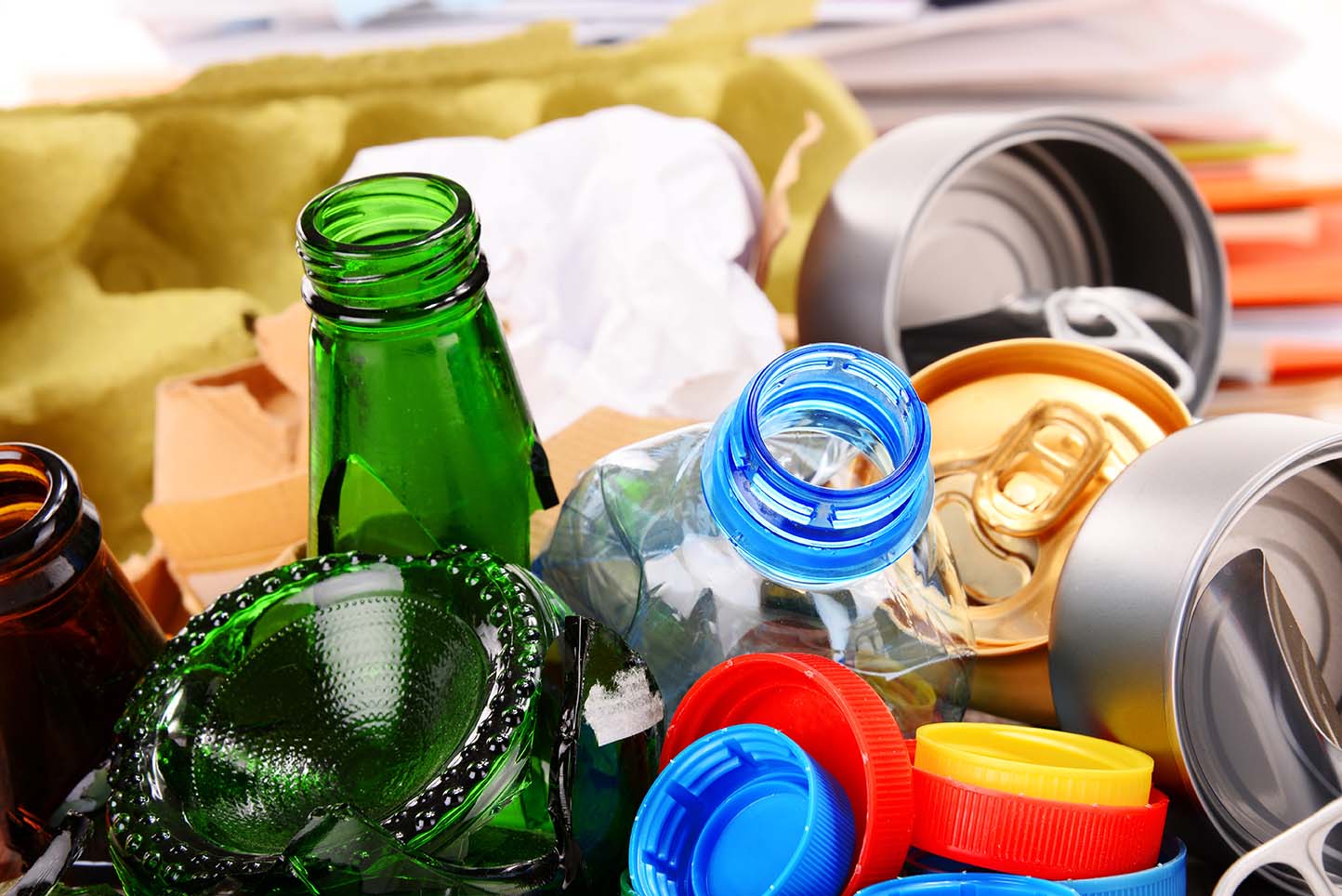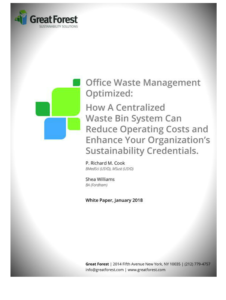
This Great Forest case study was featured in Environmental Leader’s 2013 Insider Knowledge Report–Lessons Learned from Corporate Environmental, Sustainability and Energy Decision-Makers, pg 124. (download the full pdf, 2013 report).
Client
Large financial services firm occupying five floors of a commercial buildings in NYC
Summary
Great Forest works with corporate clients to divert as much as 50,000 tons of material from landfills daily. We find that in many cases, businesses can easily increase recycling rates by centralizing waste and recycling collection points on typical office floors. A simple pilot of this centralized system demonstrated measurable results. By centralizing collection points for waste and recyclables, this financial firm ended up capturing more recyclables than they were with a traditional recycling set-up.
Challenge
This client wanted to know if their existing waste program was working effectively. Their offices had a traditional two-bin recycling setup. Each desk had two bins – a small black bin for trash, and a blue bin for paper. There were also central bins for paper, bins for trash, and bins for bottles and cans in pantries.
Solution
- Great Forest conducted a review of the existing program (to see how the bins were being used) and a waste audit (to see how much recyclables were in the trash, and how much recycling was contaminated with trash).
- We found that with their two-bin setup, the amount of recyclables in the trash was a disappointing 30 percent.
- We implemented a centralized program. All blue and black deskside bins were removed (about 1000 in total across the five floors). Central recycling stations were set up in select locations throughout each floor. Each recycling station included a bin for trash, a bin for paper, and a bin for bottles/cans. Signage for these central stations was clear, visible and color coded.
- Employees were informed of the change, and cleaning staff was trained on new collection procedures.
- A followup evaluation and waste audit was conducted to confirm that the centralized collection program improved recycling as expected.
Results
The percentage of recyclables in the trash stream dropped by 75 percent with the centralized collection system.
- With their original, two-bin system (with deskside bins), the amount of recycling in the trash was 30 percent
- With the new centralized program (without deskside bins), the amount of recycling in the trash dropped to 7 percent
- Compliance (how employees use bins) also increased. There was a 25 percent increase in correct use of trash bins, and 5 percent increase in correct use of paper bins.
In addition, the client achieved these additional benefits of having centralized collection system:
- Reduction in labor for collection of trash and recyclables (cleaning staff no longer need to spend time emptying bins across the floors),
- Significant reduction in the use of small bin liners (saving 1000 small liners a day).
NOTE: This centralized system works because it makes people get up (literally) and think about what they are throwing away. With deskside bins, busy workers often do not pay much attention to which bins they use. Every time a centralized system is implemented, we observe some initial employee pushback with the removal of deskside bins. However, as with any new program, employees get used to the new system, especially when they learn that their efforts are really working.
Learn more:
 Download our white paper: OfficeWaste Management Optimized: How A Centralized Waste Bin System Can Reduce Operating Costs and Enhance Your Organization’s Sustainability Credentials.
Download our white paper: OfficeWaste Management Optimized: How A Centralized Waste Bin System Can Reduce Operating Costs and Enhance Your Organization’s Sustainability Credentials.
